Things to Know Before a Paint Job
A weak paint job would have noticeable flaws, unpleasant odours, and low adhesion. Your next project will look fabulous and work as expected if you have a basic understanding of the properties, features, and application methods of interior paint.
You'll be better at articulating your needs to in-house or outsourced
painters if you're well-versed in the subject; you'll also understand the reasoning behind their suggestions if you're well-versed. Whoever said ignorance is bliss wasn't referring to paint issues, resulting in cost overruns, missed production, and lacking first experiences from guests. Knowing your choices takes you one step closer to doing a job well completed.
Today in this painting blog, we have prepared a list of points that a home-owner must know before getting a new paint job. They are:
- Oil-based vs Water-based Paint
- Picking the Right Paint
- Preparing the Surface
- Applying the Paint
- Check the Weather
- Maintain a Wet Edge
Oil-based vs Water-based Paint
When choosing a colour, the first step is to decide whether you want oil-based or water-based paint. Oil-based paints have been used for hundreds of years because of their impermeability and hardness.
Oil, unlike water, does not dry by evaporation. It dries into an oxidation mechanism that turns the oil into a polymer chain. This means that the layer created will be more durable and long-lasting than water-based paints and will resist the degenerative effects of water and air for longer.
Oil-based paints, on the other hand, have several drawbacks. To begin with, oil paints take longer to dry than water-based paints, have a heavy odour that lingers long after use, and contain volatile organic compounds (VOCs).
In oil paint, the ink is suspended in the solvent. This solvent contains VOCs, which are released when the paint dries or cures. VOCs are hazardous to both the welfare of the occupants and the environment. Indoor air pollution is now thought to be three times as dangerous as pollution outside.
This is mainly attributed to VOCs released by oil-based paints and other interior VOC-containing finishes and furnishings that off-gas. VOC regulations are getting more stringent, which may be one reason why oil-based paints are becoming less common.
Unlike oil-based paints, water-based paints (also known as "latex paints" or "acrylic paints") do not use solvents; the ink is carried solely by water. Latex paints have come along a long way since they were seen as a poor substitute for oil-based paints, and they are now poised to take over the industry.
Latex colours have many benefits. The drying time of latex colours is much faster than that of oil-based paint, which can take up over more than 48 hours to dry and render the space unusable at that time. Latex paints often have a low odour and produce far fewer VOCs during the drying process.
Latex paint is slightly less toxic to building residents when it emits less or no VOCs. Furthermore, it is easier to apply than oil-based paint and solvent, all of which are highly flammable. Unlike oil-based paint, which includes a special thinner, latex paint can be thinned with spray.
Picking the Right Paint
Paints can be categorized based on their role in addition to oil and water-based classification (e.g. primers, sealers, binders, finishing paints, etc.). They can also be divided into groups based on the pigments used, such as copper, lead, and titanium (each has slightly different properties). The classification of paint that offers details about the type of finish is, by far, the most important.
The finish of conventional paint application shows how the paint absorbs light until it's finished. Unique painting methods (such as faux painting) are an exception, as they produce a slightly different result. In general, the finish of commercial buildings is solely determined by the type of paint used.
Specific finishes are better suited to particular rooms because, aside from their appearance, each finish has unique features/characteristics that set it apart from the others. The following are some of the available finishes:
Matte
A matte finish does not reflect light well. It's a gritty finish that's typically thought to be warm and inviting. Matte finishes aren't very slippery, so they don't wash well. As a result, matte-finish paint is not recommended for use on walls in rooms with regular guests (e.g. a reception area or a conference room).
The best ways to use this finish are corporate offices or boardrooms, where only a few people use the space, and the risks of the walls being filthy are minimal. Since highly reflective paints attract attention to imperfections by breaking in the uniform light reflection, a matte finish is ideal for covering flaws in the walls. Matte colours are designed to prevent this problem.
Eggshell
The eggshell finish, the following paint on the reflective properties curve, has a decent amount of sheen. You can get an excellent idea of what this finish will look like by looking at a natural eggshell in the light and witnessing how the light bounces off it. Because of its subtle shine, the eggshell finish is easier to clean as predicted.
Flat Enamel
Try painting a bathroom or a café with a flat-enamel finish if you want the style of a matte finish. With the distinction of being more washable, this colour has the same characteristics as the matte coating. On the other hand, paints with enamel finishes contain potent chemicals and emit an odour for several days.
Semi-gloss
Semi-gloss paints have a lot of sheens and are very durable. They work well on surfaces such as doors and trim. They are also an outstanding choice for painting the walls of kitchens and bathrooms due to their property of high water resistance and ease of cleaning.
Satin
A satin finish has a higher shine than an eggshell finish and is easier to vacuum. Satin finishes are often used in halls and stairwells because of their dirt resistance and ease of washing. The finish gives the surface a velvety sheen but does not mask flaws.
Gloss
Glossy paints are at the top of the shiny spectrum, but they're rarely used for interior walls because of their extreme sheen, making any flaws stick out like a sore thumb. When painting floors and trim, it's safer to use them, so the finish is incredibly long-lasting.
Preparing the Surface
Painting a space entails more than simply picking up a brush and slapping the paint on the wall. It is a well-known phenomenon that 80 per cent of a successful paint job is planning. If you're painting office walls or a whole house, this is real.
Try painting a ceramic tile with a brush; you'll find that the colour won't last because the ceramic tiles are smooth and shiny, and the paint won't stick to them. The top layer of paint's primary function is to supply colour. It isn't designed to provide a lot of adhesion or security.
A primer is needed to ensure that paint adheres to any surface. A primer is a paint coating that goes on before the top coat. It's made to adhere to almost every surface. The top coat of paint is added after this has been laid down and dried; this time, it will stay there.
However, having a solid primer is just one step in the process. To obtain colour, all surfaces must be primed. The soil determines the type of preparation required. Planing and sandpapering wood are needed. You can need to remove knots that exude resin and ruin the paint job, depending on whether it's hardwood or softwood.
The most critical step in applying paint to metal is to remove some grease. A liquid de-glosser should be used for this. Rust must be eliminated as well. Rust cleaners containing oxalic acid are specifically designed for this purpose. When painting pipes that contain hot water, the paint must have unique properties that allow it to withstand the sun.
Applying the Paint
There are many explanations that it is almost always appropriate to paint a surface with several coats. The key reason is to obtain the desired full colour. You may be able to see a sliver of the original hue beneath a single coat of paint. Two coats are much more robust.
Furthermore, the second coat of paint helps you to conceal any mistakes made during the first run. In addition, the second coat of paint will add three years to the life of the paint job. Two coats of paint are considered appropriate for a surface as a rule of thumb.
The time it takes for paint to dry is determined by the drying process, as discussed above in oil and latex paints. If you're using latex paints, the process of drying is accelerated by evaporation which can take as little as one hour.
On the other hand, oil-based paints do not dry in the traditional sense: they must be dried, which may take many days. Since the first layer of paint must dry or cure before the second coat can be added, the paint job can be either sped up or slowed down, based on the type of paint used.
Different painting techniques are needed for other surfaces. Furthermore, certain paints work well on some textures. It's relatively simple to paint drywall surfaces. A sheet of gypsum surrounded or lined with paper is known as drywall (also known as gypsum board, wallboard, or plasterboard). Water-based paints work best on drywall walls, and every finish would look good but a shiny finish.
Painting block walls, such as masonry or marble, is complex due to the unevenness of the rock. Since many pores and cracks prevent a primer from adequately filling them in, block filler, a paint-like substance that smoothes out irregular or porous surfaces, is needed.
It's also used in the construction of concrete blocks. Though block filler isn't exceptionally long-lasting, it can be used as a finishing coat on its own. However, after the block filler, a more robust finish, such as eggshell or semi-gloss spray, is preferred.
Consider using latex paints on metal surfaces. Water-based paints have become a realistic alternative to oil-based paints due to recent developments in paint production and are also favoured due to their environmental friendliness.
It must first be de-glossed and then primed with a latex-bonding primer to paint the metal that has previously been coated with oil-based paint. Because of their ability to repel water and mould, glossy finishes, such as satin or full-gloss paints, are commonly used for painting metal surfaces. Epoxy coating is another good choice for metallic textures.
Check the Weather
Painting is better done while the weather is fresh, so avoid painting on hot or snowy days. Wait before the relative humidity level is between 40% and 70%. When it's cold, don't paint the outside of your house. When painting indoors, open a window to let the paint dry entirely before applying another layer.
Maintain a Wet Edge
You'll end up with lap marks lining the walls if you paint on an area that has already started to dry (which will happen in a minute or less in dry conditions). Keep a "wet tip," which means each new stroke can cover the previous one, to prevent this. Roll paint up and down the whole length of the wall with a roller.
Conclusion
Painting a room, a piece of furniture, or a door is an inexpensive way to update your house. Painting is also a typical DIY home project since almost everyone can use a paintbrush. However, just because you can paint a wall doesn't mean you know what you're doing. Before you start your next project, be sure to read these quick tips at
All in One Renovations.


 0405 900 741
0405 900 741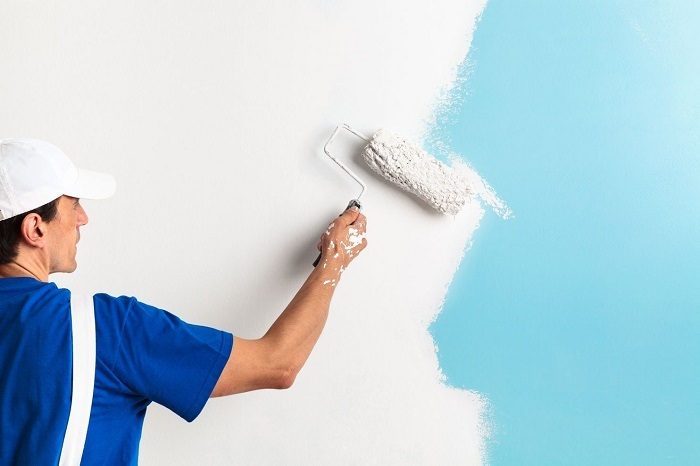
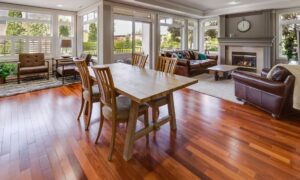
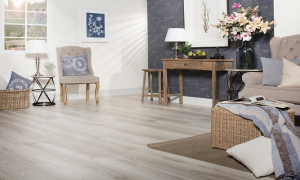
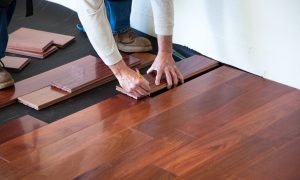
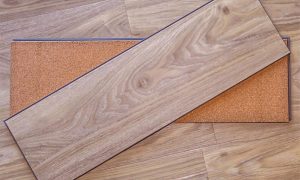
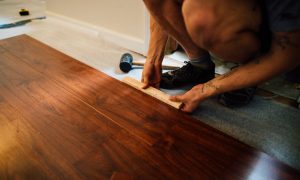
 Call Now
Call Now